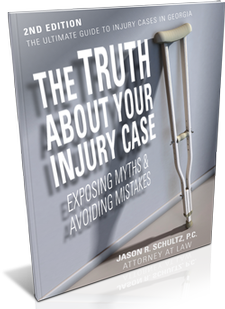Failure to Yield
It's common for drivers not to yield the right-of-way to pedestrians. One example in which this can happen is when a vehicle is coming out of a parking lot, driveway or alley. Before driving onto the sidewalk, the driver must stop. If there is a pedestrian, the driver must yield to him or her.
Speeding
This is another cause for pedestrian accidents. Drivers who exceed the posted speed limit find it difficult to slow down in enough time to avoid a pedestrian. Driving too fast is especially dangerous in school zones or residential areas.
Violating Traffic Signals/Signs
Drivers who go through stop signs or red lights are at risk of striking someone walking. This can happen when trying to beat a light or making a rolling stop.
Distracted Driving
Drivers engaged in something (other than the task of driving) may not see a pedestrian. Talking on a cellphone, eating, grooming, reaching for something and changing dials are common types of driver distractions. With the rise in distractions for both pedestrians and motorists also comes the rise of contested claims in court. To learn more about personal injury accidents, read Jason R. Schultz’s free ebook, The Ultimate Guide to Accident Cases in Georgia.
Pedestrian Error and Causes of Pedestrian Accidents
Improper Crossing
Pedestrians sometimes are at fault for an accident. In Georgia, pedestrians must yield to vehicles when not crossing at an intersection. Failing to give them the right-of-way could put responsibility for the accident on the pedestrian. Another example of improper crossing is darting out between vehicles into the road.
Distracted Walking
Distractions don't just affect motorists; they can be a primary cause of a pedestrian accident as well. Using a cellphone, texting or listening to music with earbuds are some examples in which the pedestrian's eyes and ears aren't attentive.
Violating Pedestrian Control Signals
Pedestrians must adhere to signals and signs as well. A flashing "don't walk" signal means not to start crossing. Failing to obey the signal could factor into a pedestrian accident. But it's important to note this doesn't give drivers making a turn the right-of-way. They still must wait for the pedestrian to cross. Also, if the pedestrian has already started crossing on a flashing "don't walk" signal, he/she should continue to the other side.
How to Prove Fault in a Pedestrian Accident
Proving fault begins with determining liability. This depends on who acted in a careless or reckless manner. In some cases, the driver is solely responsible, whereas in other circumstances, fault lies with the pedestrian. But it's also possible for both to share responsibility.
Some of the ways to show negligence is through witness statements. It's important to take pictures of the accident scene, including vehicle and property. A police report can help, especially if it indicates someone received a citation in the accident. In any accident claim, your attorney will need to show the cause of the pedestrian accident. Jason R. Schultz and his team have litigated pedestrian accidents and their causes in the past. An attorney from our Atlanta team will be happy to help when someone has suffered serious injuries in a pedestrian accident. Call one of us today: 404-474-0804. Still don’t know if you need a lawyer? Read our Frequently Asked Questions page.


